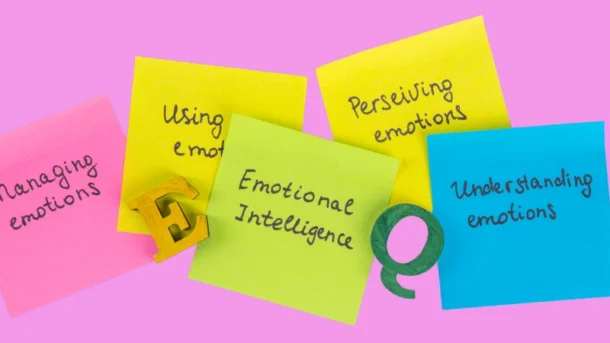Some children get upset quickly over small things and throw tantrums, while some remain calm. Why is it so? It’s all about emotional development!
Children learn to feel long before they learn to write, run, or read. They feel everything deeply, be it joy, anger, excitement, or frustration. This is why emotional development in early childhood is crucial, as it teaches them how to regulate their emotions positively and connect with the world.
Let’s understand what emotional development in early childhood is, its different stages, and why it is important for your child’s future.
Emotional Development in Early Childhood – Introduction:
In early childhood, children not only develop motor and cognitive skills, but also develop the ability to manage and express their emotions. Emotional development in early childhood is all about teaching children to understand, express, and manage their emotions as they grow, from an early age.
Importance of Emotional Development in Early Childhood:
Emotional development is a crucial phase in a child’s life, and shouldn’t be neglected as their future relationships and successes depend on it. Strong emotional development in early childhood helps children handle their feelings, build friendships, and face challenges independently. It shapes how they interact with others, boosts their confidence, and lays the pathway for future successes later in life.
Stages of Emotional Development in Early Childhood:
Emotional development in early childhood is a slow process that progresses as children grow. Each stage reflects different changes in how children recognize, express, and manage their emotions, preparing them for future emotional intelligence and enhanced social skills. Understanding these stages allows parents, caregivers, and educators to support children’s emotional well-being.
Infancy (Birth to 1 year):
Babies begin to express simple emotions like joy, fear, and pain, forming bonds with parents or caregivers.
Toddlerhood (1 to 3 years):
From age 1 to 3, toddlers start showing complex emotions, like frustration and pride, and begin learning to manage them.
Preschool (3 to 5 years):
During preschool, children understand emotions deeply, develop empathy for others, and learn to handle their emotional outbursts independently.
Early School Years (6 to 8 years):
During the early school years, children understand others’ feelings, manage their emotions, and are confident in social interactions.
Types of Emotional Development in Early Childhood:
Emotional development in early childhood includes various important skills that enhance over time. Here are the main types of emotional development in childhood:
- Emotional Recognition:
Children begin to identify their emotions, like happiness, excitement, anger, sadness, and fear. - Emotional Expression:
They express their feelings through words, actions, and body language in an improved way. - Emotional Regulation:
Children start handling big emotions, calm themselves, and respond appropriately according to the situation. - Empathy and Compassion:
They understand and care about others’ feelings, showing kindness and empathy towards people. - Social Emotional Skills:
Children are more capable of forming healthy relationships, sharing, taking turns, resolving conflicts, and cooperating.
Factors Influencing Emotional Development:
Many things influence a child’s emotional development. Some of the factors involve:
- Parenting Style: Caring and supportive parenting supports effective emotional growth.
- Environment: Safe, nurturing surroundings help children feel secure and comforted.
- Social Interactions: Playing and interacting with others teach sharing, communication, empathy, and trust.
- Temperament: A child’s natural temperament impacts how they manage emotions.
- Life Experiences: Positive and negative life experiences affect emotional strength and understanding.
- Culture: Family values shape how emotions are expressed and understood.
Frequently Asked Questions:
What is emotional development in early childhood?
Emotional development in early childhood is how children begin to understand, express, and manage their emotions. Emotional regulation since childhood helps build trust, encourages healthy relationships, and ensures emotional strength.
What are the five emotional developments?
The five key areas of emotional development in early childhood are self-awareness, self-regulation, social skills, empathy, and emotional expression. Each shapes how children express their emotions and understand others’ emotions.
How do children develop emotions in early childhood?
Through play, social interactions, and bonding, emotional development develops as children explore, watch, learn, and reflect on emotions, helping them build healthy emotional and social relationships.
What is the emotional development of a 2-year-old?
The emotional development of a 2-year-old is reflected through tantrums, clinginess, and testing boundaries. Children start showing independence while still requiring comfort, routine, and guidance.
What are the emotional milestones for a 3-year-old?
Emotional development in early childhood at age 3 includes identifying emotions, expressing love, and playing with friends. Children also begin learning to take turns and handle simple tantrums and frustrations.
What is a red flag behavior for a 2-year-old?
A red flag in emotional development for a 2-year-old is when they don’t make eye contact, can’t express their emotions, or don’t respond to comfort signs. Watch closely for these red flags to address and provide support.



